Daniel W.W. Biostatistics: A Foundation for Analysis in the Health Sciences
Подождите немного. Документ загружается.


8. Explain the rationale behind the method of computing the expected frequencies in a test of
independence.
9. Explain the difference between a test of independence and a test of homogeneity.
10. Explain the rationale behind the method of computing the expected frequencies in a test of
homogeneity.
11. When do researchers use the Fisher exact test rather than the chi-square test?
12. Define the following:
(a) Observational study (b) Risk factor
(c) Outcome (d) Retrospective study
(e) Prospective study (f) Relative risk
(g) Odds (h) Odds ratio
(i) Confounding variable
13. Under what conditions is the Mantel–Haenszel test appropriate?
14. Explain how researchers interpret the following measures:
(a) Relative risk
(b) Odds ratio
(c) Mantel–Haenszel common odds ratio
15. In a study of violent victimization of women and men, Porcerelli et al. (A-26) collected infor-
mation from 679 women and 345 men ages 18 to 64 years at several family practice centers
in the metropolitan Detroit area. Patients filled out a health history questionnaire that included
a question about victimization. The following table shows the sample subjects cross-classified
by gender and the type of violent victimization reported. The victimization categories are
defined as no victimization, partner victimization (and not by others), victimization by a per-
son other than a partner (friend, family member, or stranger), and those who reported multiple
victimization.
Gender No Victimization Partner Nonpartner Multiple Total
Women 611 34 16 18 679
Men 308 10 17 10 345
Total 919 44 33 28 1024
Source: John H. Porcerelli, Rosemary Cogan, Patricia P. West, Edward A. Rose, Dawn Lambrecht,
Karen E. Wilson, Richard K. Severson, and Dunia Karana, “Violent Victimization of Women and Men:
Physical and Psychiatric Symptoms,” Journal of the American Board of Family Practice, 16 (2003),
32–39.
Can we conclude on the basis of these data that victimization status and gender are not independ-
ent? Let
16. Refer to Exercise 15. The following table shows data reported by Porcerelli et al. for 644 African-
American and Caucasian women. May we conclude on the basis of these data that for women,
race and victimization status are not independent? Let a = .05.
a = .05.
REVIEW QUESTIONS AND EXERCISES 667
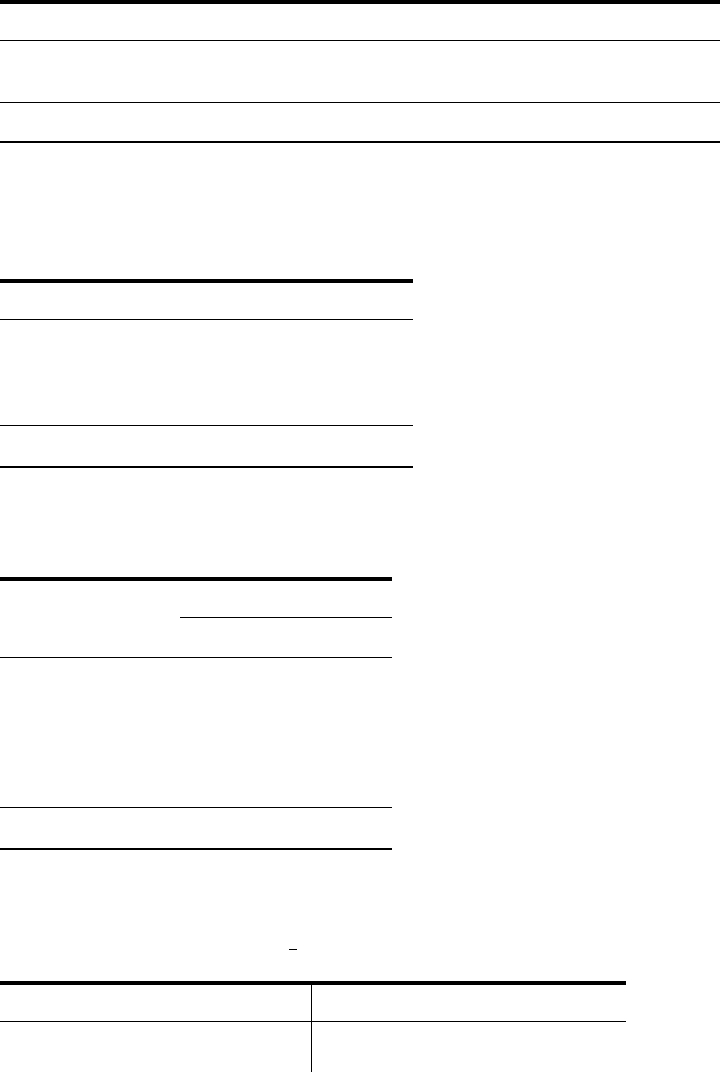
No Victimization Partner Nonpartner Multiple Total
Caucasian 356 20 3 9 388
African-American 226 11 10 9 256
Total 582 31 13 18 644
Source: John H. Porcerelli, Rosemary Cogan, Patricia P. West, Edward A. Rose, Dawn Lambrecht, Karen
E. Wilson, Richard K. Severson, and Dunia Karana, “Violent Victimization of Women and Men: Physical
and Psychiatric Symptoms,” Journal of the American Board of Family Practice, 16 (2003), 32–39.
17. A sample of 150 chronic carriers of a certain antigen and a sample of 500 noncarriers revealed
the following blood group distributions:
Blood Group Carriers Noncarriers Total
0 72 230 302
A 54 192 246
B166379
AB 8 15 23
Total 150 500 650
Can one conclude from these data that the two populations from which the samples were drawn differ
with respect to blood group distribution? Let What is the p value for the test?
18. The following table shows 200 males classified according to social class and headache status:
Social Class
Headache Group A B C Total
No headache 6 30 22 58
(in previous year)
Simple headache 11 35 17 63
Unilateral headache 4 19 14 37
(nonmigraine)
Migraine 5 25 12 42
Total 26 109 65 200
Do these data provide sufficient evidence to indicate that headache status and social class are
related? Let What is the p value for this test?
19. The following is the frequency distribution of scores made on an aptitude test by 175 applicants
to a physical therapy training facility
Score Number of Applicants Score Number of Applicants
10–14 3 40–44 28
15–19 8 45–49 20
1x
= 39.71, s = 12.922.
a = .05.
a = .05.
668 CHAPTER 12 THE CHI-SQUARE DISTRIBUTION AND THE ANALYSIS OF FREQUENCIES
(Continued)
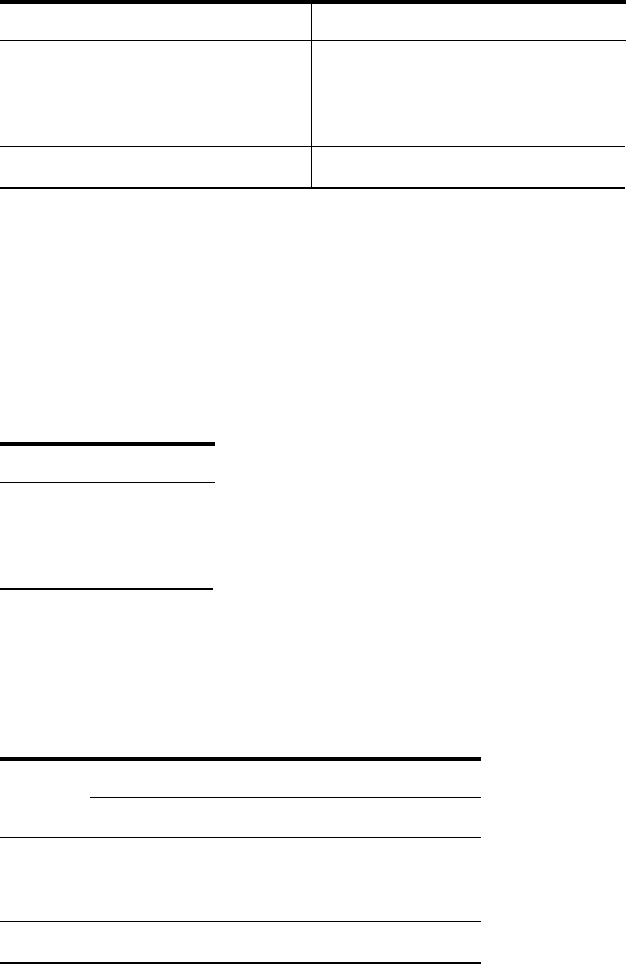
Score Number of Applicants Score Number of Applicants
20–24 13 50–54 18
25–29 17 55–59 12
30–34 19 60–64 8
35–39 25 65–69 4
Total 175
Do these data provide sufficient evidence to indicate that the population of scores is not normally
distributed? Let What is the p value for this test?
20. A local health department sponsored a venereal disease (VD) information program that was open
to high-school juniors and seniors who ranged in age from 16 to 19 years. The program director
believed that each age level was equally interested in knowing more about VD. Since each age
level was about equally represented in the area served, she felt that equal interest in VD would be
reflected by equal age-level attendance at the program. The age breakdown of those attending was
as follows:
Age Number Attending
16 26
17 50
18 44
19 40
Are these data incompatible with the program director’s belief that students in the four age levels
are equally interested in VD? Let What is the p value for this test?
21. A survey of children under 15 years of age residing in the inner-city area of a large city were clas-
sified according to ethnic group and hemoglobin level. The results were as follows:
Ethnic
Hemoglobin Level (g/100 ml)
Group 10.0 or Greater 9.0–9.9 Total
A 80 100 20 200
B 99 190 96 385
C 70 30 10 110
Total 249 320 126 695
Do these data provide sufficient evidence to indicate, at the .05 level of significance, that the two
variables are related? What is the p value for this test?
22. A sample of reported cases of mumps in preschool children showed the following distribution by
age:
<9.0
a = .05.
a = .05.
REVIEW QUESTIONS AND EXERCISES 669
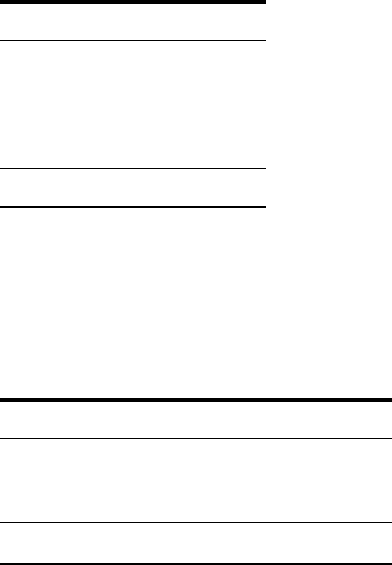
Age (Years) Number of Cases
Under 1 6
120
235
341
448
Total 150
Test the hypothesis that cases occur with equal frequency in the five age categories. Let
What is the p value for this test?
23. Each of a sample of 250 men drawn from a population of suspected joint disease victims was
asked which of three symptoms bother him most. The same question was asked of a sample of
300 suspected women joint disease victims. The results were as follows:
Most Bothersome Symptom Men Women
Morning stiffness 111 102
Nocturnal pain 59 73
Joint swelling 80 125
Total 250 300
Do these data provide sufficient evidence to indicate that the two populations are not homogeneous
with respect to major symptoms? Let What is the p value for this test?
For each of the Exercises 24 through 34, indicate whether a null hypothesis of homogeneity or a
null hypothesis of independence is appropriate.
24. A researcher wishes to compare the status of three communities with respect to immunity against
polio in preschool children. A sample of preschool children was drawn from each of the three
communities.
25. In a study of the relationship between smoking and respiratory illness, a random sample of adults
were classified according to consumption of tobacco and extent of respiratory symptoms.
26. A physician who wished to know more about the relationship between smoking and birth defects
studies the health records of a sample of mothers and their children, including stillbirths and spon-
taneously aborted fetuses where possible.
27. A health research team believes that the incidence of depression is higher among people with hypo-
glycemia than among people who do not suffer from this condition.
28. In a simple random sample of 200 patients undergoing therapy at a drug abuse treatment center,
60 percent belonged to ethnic group I. The remainder belonged to ethnic group II. In ethnic group
I, 60 were being treated for alcohol abuse (A), 25 for marijuana abuse (B), and 20 for abuse of
heroin, illegal methadone, or some other opioid (C). The remainder had abused barbiturates,
a = .05.
a = .05.
670 CHAPTER 12 THE CHI-SQUARE DISTRIBUTION AND THE ANALYSIS OF FREQUENCIES
cocaine, amphetamines, hallucinogens, or some other nonopioid besides marijuana (D). In ethnic
group II the abused drug category and the numbers involved were as follows:
Can one conclude from these data that there is a relationship between ethnic group and choice of
drug to abuse? Let and find the p value.
29. Solar keratoses are skin lesions commonly found on the scalp, face, backs of hands, forearms, ears,
scalp, and neck. They are caused by long-term sun exposure, but they are not skin cancers. Chen
et al. (A-27) studied 39 subjects randomly assigned (with a 3 to 1 ratio) to imiquimod cream and
a control cream. The criterion for effectiveness was having 75 percent or more of the lesion area
cleared after 14 weeks of treatment. There were 21 successes among 29 imiquimod-treated subjects
and three successes among 10 subjects using the control cream. The researchers used Fisher’s exact
test and obtained a p value of .027. What are the variables involved? Are the variables quantitative
or qualitative? What null and alternative hypotheses are appropriate? What are your conclusions?
30. Janardhan et al. (A-28) examined 125 patients who underwent surgical or endovascular treatment
for intracranial aneurysms. At 30 days postprocedure, 17 subjects experienced transient/persistent
neurological deficits. The researchers performed logistic regression and found that the 95 percent
confidence interval for the odds ratio for aneurysm size was .09–.96. Aneurysm size was
dichotomized as less than 13 mm and greater than or equal to 13 mm. The larger tumors indicated
higher odds of deficits. Describe the variables as to whether they are continuous, discrete, quanti-
tative, or qualitative. What conclusions may be drawn from the given information?
31. In a study of smoking cessation by Gold et al. (A-29), 189 subjects self-selected into three treat-
ments: nicotine patch only (NTP), Bupropion SR only (B), and nicotine patch with Bupropion SR
Subjects were grouped by age into younger than 50 years old, between 50 and 64,
and 65 and older. There were 15 subjects younger than 50 years old who chose NTP, 26 who chose
B, and 16 who chose . In the 50–64 years category, six chose NTP, 54 chose B, and 40
chose In the oldest age category, six chose NTP, 21 chose B, and five chose
What statistical technique studied in this chapter would be appropriate for analyzing these data?
Describe the variables involved as to whether they are continuous, discrete, quantitative, or qual-
itative. What null and alternative hypotheses are appropriate? If you think you have sufficient infor-
mation, conduct a complete hypothesis test. What are your conclusions?
32. Kozinszky and Bártai (A-30) examined contraceptive use by teenage girls requesting abortion in
Szeged, Hungary. Subjects were classified as younger than 20 years old or 20 years old or older. Of
the younger than 20-year-old women, 146 requested an abortion. Of the older group, 1054 requested
an abortion. A control group consisted of visitors to the family planning center who did not request
an abortion or persons accompanying women who requested an abortion. In the control group, there
were 147 women under 20 years of age and 1053 who were 20 years or older. One of the outcome
variables of interest was knowledge of emergency contraception. The researchers report that, “Emer-
gency contraception was significantly [(Mantel–Haenszel) p ] less well known among the
would-be aborter teenagers as compared to the older women requesting artificial abortion
than the relevant knowledge of the teenage controls ” Explain the mean-
ing of the reported statistics. What are your conclusions based on the given information?
33. The goal of a study by Crosignani et al. (A-31) was to assess the effect of road traffic exhaust
on the risk of childhood leukemia. They studied 120 children in Northern Italy identified through
a population-based cancer registry (cases). Four controls per case, matched by age and gender,
1OR = .102.1OR = .072
6 .001
NTP + B.NTP + B.
NTP + B
1NTP + B2.
a = .05
A
1282
B 1322
C1132
D1the remainder2
REVIEW QUESTIONS AND EXERCISES 671
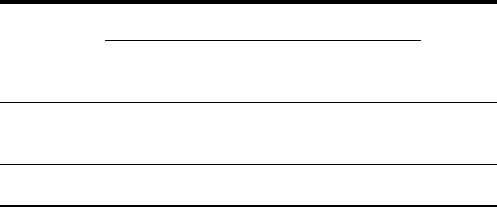
were sampled from population files. The researchers used a diffusion model of benzene to esti-
mate exposure to traffic exhaust. Compared to children whose homes were not exposed to road
traffic emissions, the rate of childhood leukemia was significantly higher for heavily exposed chil-
dren. Characterize this study as to whether it is observational, prospective, or retrospective.
Describe the variables as to whether they are continuous, discrete, quantitative, qualitative, a risk
factor, or a confounding variable. Explain the meaning of the reported results. What are your con-
clusions based on the given information?
34. Gallagher et al. (A-32) conducted a descriptive study to identify factors that influence women’s
attendance at cardiac rehabilitation programs following a cardiac event. One outcome variable
of interest was actual attendance at such a program. The researchers enrolled women discharged
from four metropolitan hospitals in Sydney, Australia. Of 183 women, only 57 women actually
attended programs. The authors reported odds ratios and confidence intervals on the following
variables that significantly affected outcome: age-squared (1.72; 1.10–2.70). Women over the
age of 70 had the lowest odds, while women ages 55–70 years had the highest odds.), perceived
control (.92; .85–1.00), employment (.20; .07–.58), diagnosis (6.82, 1.84–25.21, odds ratio was
higher for women who experienced coronary artery bypass grafting vs. myocardial infarction),
and stressful event (.21, .06–.73). Characterize this study as to whether it is observational,
prospective, or retrospective. Describe the variables as to whether they are continuous, discrete,
quantitative, qualitative, a risk factor, or a confounding variable. Explain the meaning of the
reported odds ratios.
For each of the Exercises 35 through 54, do as many of the following as you think appropriate:
(a) Apply one or more of the techniques discussed in this chapter.
(b) Apply one or more of the techniques discussed in previous chapters.
(c) Construct graphs.
(d) Construct confidence intervals for population parameters.
(e) Formulate relevant hypotheses, perform the appropriate tests, and find p values.
(f) State the statistical decisions and clinical conclusions that the results of your hypothesis tests
justify.
(g) Describe the population(s) to which you think your inferences are applicable.
(h) State the assumptions necessary for the validity of your analyses.
35. In a prospective, randomized, double-blind study, Stanley et al. (A-33) examined the relative effi-
cacy and side effects of morphine and pethidine, drugs commonly used for patient-controlled anal-
gesia (PCA). Subjects were 40 women, between the ages of 20 and 65 years, undergoing total
abdominal hysterectomy. Patients were allocated randomly to receive morphine or pethidine by
PCA. At the end of the study, subjects described their appreciation of nausea and vomiting, pain,
and satisfaction by means of a three-point verbal scale. The results were as follows:
Satisfaction
Unhappy/ Moderately Happy/
Drug Miserable Happy Delighted Total
Pethidine 5 9 6 20
Morphine 9 9 2 20
Total 14 18 8 40
672 CHAPTER 12 THE CHI-SQUARE DISTRIBUTION AND THE ANALYSIS OF FREQUENCIES
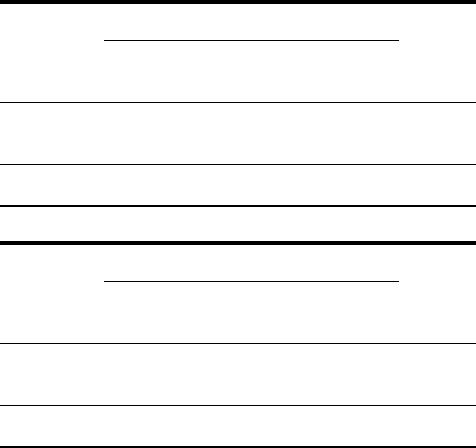
Pain
Unbearable/ Slight/
Drug Severe Moderate None Total
Pethidine 2 10 8 20
Morphine 2 8 10 20
Total 4 18 18 40
Nausea
Unbearable/ Slight/
Drug Severe Moderate None Total
Pethidine 5 9 6 20
Morphine 7 8 5 20
Total 12 17 11 40
Source: Dr. Balraj L. Appadu. Used with permission.
36. Screening data from a statewide lead poisoning prevention program between April 1990 and March
1991 were examined by Sargent et al. (A-34) in an effort to learn more about community risk fac-
tors for iron deficiency in young children. Study subjects ranged in age between 6 and 59 months.
Among 1860 children with Hispanic surnames, 338 had iron deficiency. Four-hundred-fifty-seven
of 1139 with Southeast Asian surnames and 1034 of 8814 children with other surnames had iron
deficiency.
37. To increase understanding of HIV-infection risk among patients with severe mental illness, Hor-
wath et al. (A-35) conducted a study to identify predictors of injection drug use among patients
who did not have a primary substance use disorder. Of 192 patients recruited from inpatient and
outpatient public psychiatric facilities, 123 were males. Twenty-nine of the males and nine of the
females were found to have a history of illicit-drug injection.
38. Skinner et al. (A-36) conducted a clinical trial to determine whether treatment with melphalan,
prednisone, and colchicine (MPC) is superior to colchicine (C) alone. Subjects consisted of 100
patients with primary amyloidosis. Fifty were treated with C and 50 with MPC. Eighteen months
after the last person was admitted and 6 years after the trial began, 44 of those receiving C and
36 of those receiving MPC had died.
39. The purpose of a study by Miyajima et al. (A-37) was to evaluate the changes of tumor cell con-
tamination in bone marrow (BM) and peripheral blood (PB) during the clinical course of patients
with advanced neuroblastoma. Their procedure involved detecting tyrosine hydroxylase (TH)
mRNA to clarify the appropriate source and time for harvesting hematopoietic stem cells for trans-
plantation. The authors used Fisher’s exact test in the analysis of their data. If available, read
their article and decide if you agree that Fisher’s exact text was the appropriate technique to use.
If you agree, duplicate their procedure and see if you get the same results. If you disagree, explain
why.
REVIEW QUESTIONS AND EXERCISES 673
40. Cohen et al. (A-38) investigated the relationship between HIV seropositivity and bacterial vaginosis
in a population at high risk for sexual acquisition of HIV. Subjects were 144 female commercial sex
workers in Thailand of whom 62 were HIV-positive and 109 had a history of sexually transmitted
diseases (STD). In the HIV-negative group, 51 had a history of STD.
41. The purpose of a study by Lipschitz et al. (A-39) was to examine, using a questionnaire, the rates
and characteristics of childhood abuse and adult assaults in a large general outpatient population.
Subjects consisted of 120 psychiatric outpatients (86 females, 34 males) in treatment at a large
hospital-based clinic in an inner-city area. Forty-seven females and six males reported incidents of
childhood sexual abuse.
42. Subjects of a study by O’Brien et al. (A-40) consisted of 100 low-risk patients having well-dated
pregnancies. The investigators wished to evaluate the efficacy of a more gradual method for pro-
moting cervical change and delivery. Half of the patients were randomly assigned to receive a
placebo, and the remainder received 2 mg of intravaginal prostaglandin E
2
(PGE
2
) for 5 consecu-
tive days. One of the infants born to mothers in the experimental group and four born to those in
the control group had macrosomia.
43. The purposes of a study by Adra et al. (A-41) were to assess the influence of route of delivery on
neonatal outcome in fetuses with gastroschisis and to correlate ultrasonographic appearance of the
fetal bowel with immediate postnatal outcome. Among 27 cases of prenatally diagnosed gastroschi-
sis the ultrasonograph appearance of the fetal bowel was normal in 15. Postoperative complica-
tions were observed in two of the 15 and in seven of the cases in which the ultrasonographic
appearance was not normal.
44. Liu et al. (A-42) conducted household surveys in areas of Alabama under tornado warnings. In
one of the surveys (survey 2) the mean age of the 193 interviewees was 54 years. Of these 56.0
percent were women, 88.6 percent were white, and 83.4 percent had a high-school education or
higher. Among the information collected were data on shelter-seeking activity and understanding
of the term “tornado warning.” One-hundred-twenty-eight respondents indicated that they usually
seek shelter when made aware of a tornado warning. Of these, 118 understood the meaning of tor-
nado warning. Forty-six of those who said they didn’t usually seek shelter understood the mean-
ing of the term.
45. The purposes of a study by Patel et al. (A-43) were to investigate the incidence of acute angle-
closure glaucoma secondary to pupillary dilation and to identify screening methods for detecting
angles at risk of occlusion. Of 5308 subjects studied, 1287 were 70 years of age or older. Seven-
teen of the older subjects and 21 of the younger subjects (40 through 69 years of age) were iden-
tified as having potentially occludable angles.
46. Voskuyl et al. (A-44) investigated those characteristics (including male gender) of patients with
rheumatoid arthritis (RA) that are associated with the development of rheumatoid vasculitis (RV).
Subjects consisted of 69 patients who had been diagnosed as having RV and 138 patients with RA
who were not suspected to have vasculitis. There were 32 males in the RV group and 38 among
the RA patients.
47. Harris et al. (A-45) conducted a study to compare the efficacy of anterior colporrhaphy and retro-
pubic urethropexy performed for genuine stress urinary incontinence. The subjects were 76 women
who had undergone one or the other surgery. Subjects in each group were comparable in age, social
status, race, parity, and weight. In 22 of the 41 cases reported as cured the surgery had been per-
formed by attending staff. In 10 of the failures, surgery had been performed by attending staff. All
other surgeries had been performed by resident surgeons.
674 CHAPTER 12 THE CHI-SQUARE DISTRIBUTION AND THE ANALYSIS OF FREQUENCIES
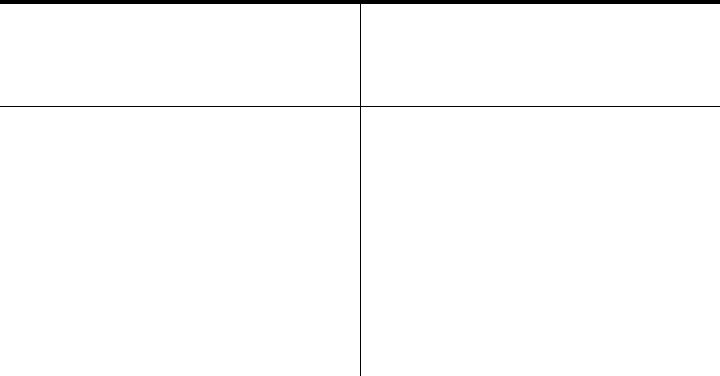
48. Kohashi et al. (A-46) conducted a study in which the subjects were patients with scoliosis. As
part of the study, 21 patients treated with braces were divided into two groups, group
and group on the basis of certain scoliosis progression factors. Two
patients in group A and eight in group B exhibited evidence of progressive deformity, while the
others did not.
49. In a study of patients with cervical intraepithelial neoplasia, Burger et al. (A-47) compared
those who were human papillomavirus (HPV)-positive and those who were HPV-negative with
respect to risk factors for HPV infection. Among their findings were 60 out of 91 nonsmokers
with HPV infection and 44 HPV-positive patients out of 50 who smoked 21 or more cigarettes
per day.
50. Thomas et al. (A-48) conducted a study to determine the correlates of compliance with follow-up
appointments and prescription filling after an emergency department visit. Among 235 respondents,
158 kept their appointments. Of these, 98 were females. Of those who missed their appointments,
31 were males.
51. The subjects of a study conducted by O’Keefe and Lavan (A-49) were 60 patients with cogni-
tive impairment who required parenteral fluids for at least 48 hours. The patients were ran-
domly assigned to receive either intravenous (IV) or subcutaneous (SC) fluids. The mean age
of the 30 patients in the SC group was 81 years with a standard deviation of 6. Fifty-seven
percent were females. The mean age of the IV group was 84 years with a standard deviation
of 7. Agitation related to the cannula or drip was observed in 11 of the SC patients and 24 of
the IV patients.
52. The objective of a study by Lee et al. (A-50) was to improve understanding of the biologic
behavior of gastric epithelioid stromal tumors. They studied the clinical features, histologic
findings, and DNA ploidy of a series of the tumors to identify factors that might distinguish
between benign and malignant variants of these tumors and have relevance for prognosis. Fifty-
five patients with tumors were classified on the basis of whether their tumors were high-grade
malignant (grade 2), low-grade malignant (grade 1), or benign (grade 0). Among the data col-
lected were the following:
Outcome Number of Outcome Number of
(1 Death Days to Last (1 Death Days to Last
Tumor from Follow-Up Tumor from Follow-Up
Patient Grade Disease) or Death Patient Grade Disease) or Death
1 0 0 87 8 0 0 1616
2 0 0 775 9 0 0 1982
3 0 0 881 10 0 0 2035
4 0 0 914 11 0 0 2191
5 0 0 1155 12 0 0 2472
6 0 0 1162 13 0 0 2527
7 0 0 1271 14 0 0 2782
15 0 0 3108 36 0 0 7318
16 0 0 3158 37 0 0 7447
17 0 0 3609 38 0 0 9525
18 0 0 3772 39 0 0 9938
19 0 0 3799 40 0 0 10429
B1n
B
= 92,A1n
A
= 122
REVIEW QUESTIONS AND EXERCISES 675
(Continued)
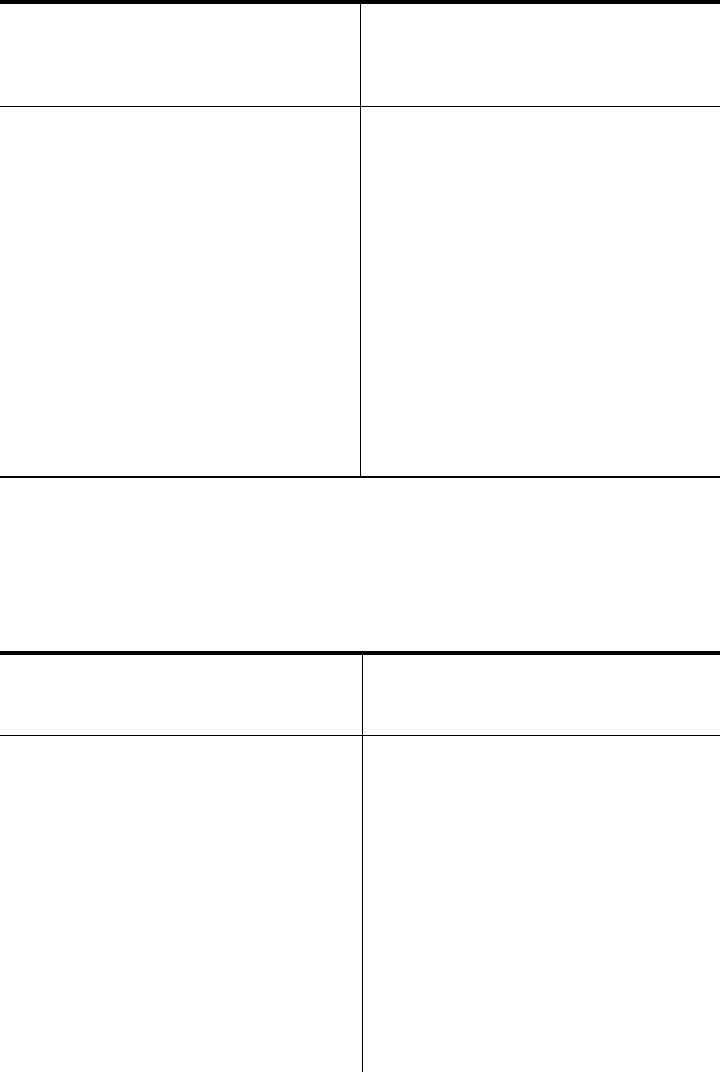
Outcome Number of Outcome Number of
(1 Death Days to Last (1 Death Days to Last
Tumor from Follow-Up Tumor from Follow-Up
Patient Grade Disease) or Death Patient Grade Disease) or Death
20 0 0 3819 41 1 1 450
21 0 0 4586 42 1 1 556
22 0 0 4680 43 1 1 2102
23 0 0 4989 44 1 0 2756
24 0 0 5675 45 1 0 3496
25 0 0 5936 46 1 1 3990
26 0 0 5985 47 1 0 5686
27 0 0 6175 48 1 0 6290
28 0 0 6177 49 1 0 8490
29 0 0 6214 50 2 1 106
30 0 0 6225 51 2 1 169
31 0 0 6449 52 2 1 306
32 0 0 6669 53 2 1 348
33 0 0 6685 54 2 1 549
34 0 0 6873 55 2 1 973
35 0 0 6951
Source: Dr. Michael B. Farnell. Used with permission.
53. Girard et al. (A-51) conducted a study to identify prognostic factors of improved survival after
resection of isolated pulmonary metastases (PM) from colorectal cancer. Among the data collected
were the following regarding number of resected PM, survival, and outcome for 77 patients who
underwent a complete resection at the first thoracic operation:
Number of Number of
Resected Survival Resected Survival
Patient PM (Months) Status Patient PM (Months) Status
1 1 24 Alive 8 1 15 Dead
2 1 67 Alive 9 1 10 Dead
3 1 42 Alive 10 1 41 Dead
4 1 28 Dead 11 1 41 Dead
5 1 37 Dead 12 1 27 Dead
6 1 133 Alive 13 1 93 Alive
7 1 33 Dead 14 1 0 Dead
15 1 60 Dead 47 1 54 Dead
16 1 43 Dead 48 1 57 Alive
17 1 73 Alive 49 1 16 Dead
18 1 55 Alive 50 1 29 Dead
19 1 46 Dead 51 1 14 Dead
20 1 66 Alive 52 1 29 Dead
21 1 10 Dead 53 1 99 Dead
22 1 3 Dead 54 1 23 Dead
676 CHAPTER 12 THE CHI-SQUARE DISTRIBUTION AND THE ANALYSIS OF FREQUENCIES
(Continued)
